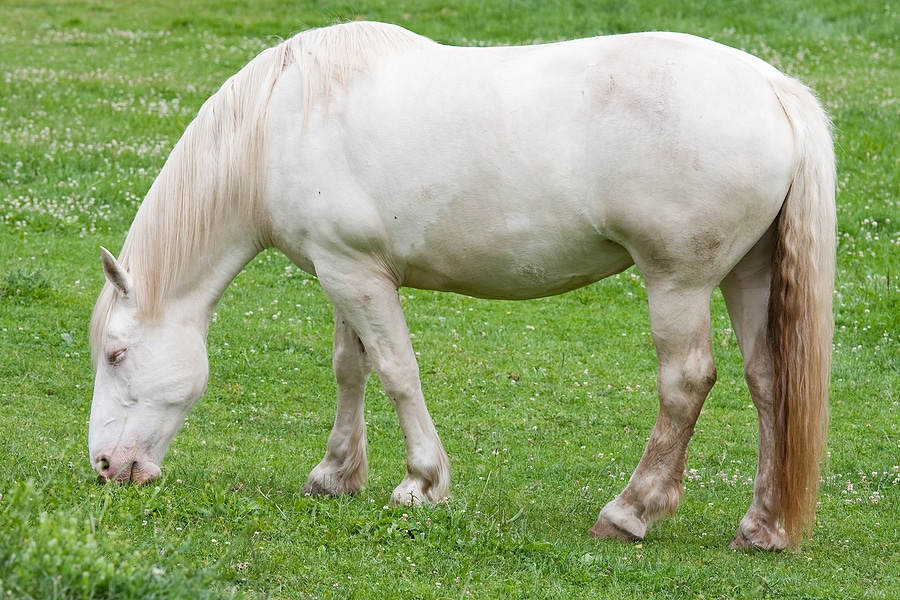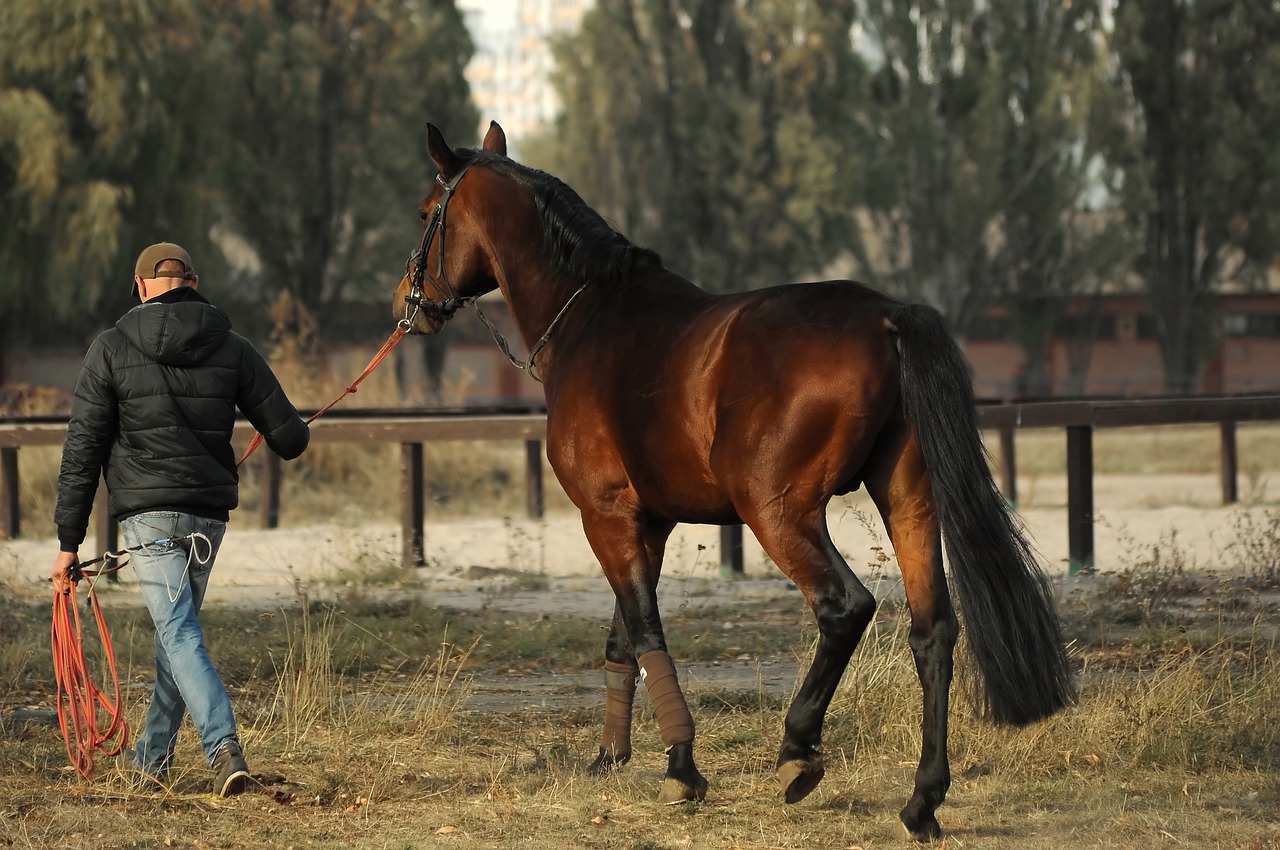At a first glance, a lot of people may not be able to tell the difference between many different horse breeds and types, or even realise that horses come in different breeds. This may lead to several questions about them, including how many there are, which are the biggest or fastest, or if there are any rare breeds not often seen.
We have aimed to answer all of these in this helpful starting guide, so please read on to find out more about horse breeds and how they have come about.
How We Came to Have Domestic Horse Breeds
A study conducted in 2012 found that the common ancestors of the modern domestic horse likely originated somewhere in Eurasia, around 160,000 years ago. This study also determined that horses are likely to have first been domesticated 6,000 years ago, somewhere in the Eurasian Steppe. A later study, published in 2017, then determined that these horses are likely to descend from two distinct lines: the Arabian Horse, and the now-extinct Turkoman Horse, which was similar to the modern Akhal-Teke.
As their use in human society grew, horses spread around the world via trade, theft, war, gifting, and other means. This was when humans started to selectively breed them to obtain more desirable traits and characteristics so that they could meet work requirements through a better combination of strength, speed, and stamina.
Horsesâ lineages and traits have been tracked for centuries, though studbooks, also known as âbreed registriesâ, âregistersâ, or âherdbooksâ, didnât exist until the 1700s. It is from these studbooks that we can pinpoint specific horse breeds and the traits they display in the modern era.
How Many Breeds of Horses are There?

Strictly speaking, it is difficult for experts to calculate exactly how many breeds of horses there currently are. Most suggest there are somewhere between 150 and 350 different horse breeds, though some of these may no longer exist and are instead listed as ancestors of newer breeds. Other breeds have been crossed over time as well, to develop new ones, or may have been bred so similarly to others that they are nearly identical.
Some horse breeds are also eligible for registration as breeds because of their colour. These are known as âcolourâ or âcolorâ breeds and are allowed to be considered a breed because they have coats of a particularly desirable colour, such as the Palomino, Pinto, or Buckskin. They may also be registered as a colour breed regardless of their actual breed, and may or may not have a pedigree component to them.
Breeds of horses are also often confused or associated with types. There are two main types of horses that you will be familiar with: horses and ponies. Most people suggest that the difference in these is height, with horses standing over 14.2 hands (144 cm) and ponies coming in under this. It is then possible to break these types down again into basic types depending on what the animal is bred for, from work and sport to leisure and companionship.
More breeds and types have developed over time as mankindâs need for each has evolved, and people from around the world have all developed individual horse breeds and types to suit their needs. This is one of the primary reasons there are so many, and why so many of them overlap in their traits, characteristics, and abilities when it comes to working.
The Largest Horse Breeds

The biggest horse breeds you are likely to see will have been bred for very specific purposes, most likely for farming, forestry, or industrial work. These are draught (or draft in the US) horses, and may also be referred to as drays. Each of these names comes from the Old English word âdraganâ, which means âto drawâ or âto haulâ. They may also be referred to as heavy horses or carthorses.
Owing to their size, the biggest of all horse breeds will not generally be used for riding, but will often be shown.
The list of largest horse breeds in the world makes note of:
- American Cream Draft Horses (the only historic US draft breed still in existence, American Cream Drafts will usually stand between 15.1 and 16.3 hands, or 153 cm to 165 cm)
- Australian Draught Horses (the dominant draught horse breed for its country, they stand at an average of 16.2 to 17.2 hands, or 164 cm to 174 cm in height)
- Belgian Draught (originally known as the Flanders Horse, this breed will normally grow to between 15 and 18 hands, or 152 cm and 182 cm in height)
- Boulonnais Horses (also known as White Marble Horses, this French breed will typically reach heights between 15.1 and 17 hands, or 153 cm and 172 cm)
- Clydesdale Horses (these Scottish horses usually stand between 16 and 18 hands, or 162 cm and 182 cm in height)
- Dutch Draught Horses (this intelligent and calm breed tends to grow to between 15 and 17 hands, or 152 cm and 182 cm)
- Jutland Horses (this Danish breed is believed to have descended from Frederiksborger Horses, and usually stand between 15 and 16.1 hands, or 152 cm and 163 cm)
- Lithuanian Draught Horses (these horses are still mostly native to the country they were first bred in, and normally stand between 15 and 16 hands, or 152 cm and 162 cm)
- Percheron Horses (once considered the tallest breed in the world at 19 hands or 193 cm in height, this French breed has since been crossbred for a more elegant appearance, meaning they now may be as small as 15 hands, or 152 cm)
- Russian Heavy Draught Horses (also known as Russian Ardennes, these horses are generally smaller than other draught breeds, averaging between 144 cm and 152 cm, or between 14 and 15 hands in height)
- Shire Horses (the largest horses in the world, this breed may stand anywhere between 17 and 19 hands, or 172 cm and 193 cm)
- Soviet Heavy Draught Horses (often confused for the Russian Heavy Draught Horse, this breed also stands smaller than other large breeds at 144 cm and 152 cm, or between 14 and 15 hands)
- Suffolk Punch Horses (Britainâs oldest native breed of horse, they generally stand between 16 and 18 hands, or 162 cm and 182 cm)
The Smallest Horse Breeds

Many people see particularly small horse breeds and wonder why humans have chosen to breed them and bond with them over the years, but there are lots of reasons weâve chosen to keep these breeds in our hearts and our paddocks over the centuries. In the earliest of times, horses were small by nature anyway, and agile to suit even the harshest of environments.
Over the years, humans then tamed and put these horses to work, in mine shafts, fields, and marketplaces, pulling carts and hauling loads to make the job easier. In many places, small horses are still used to carry out these tasks, as well as to teach children to ride.
The list of smallest horse breeds includes:
- Falabella Horses (the smallest horses in the world. This Argentinian breed will grow, on average, to between 71 cm to 86 cm tall, or between 7 and 8 and a half hands)
- Guoxia Horses (one of the few known breeds native to China, which will grow to around 101 cm in height, or just under 10 hands)
- Miniature Horses (growing to around 86 cm to 97 cm, or between 8 and 9 hands, the Miniature Horse will frequently outlive larger breeds, despite its small size)
- Noma Ponies (one of the few known breeds native to Japan, which will grow to around 101 cm in height, or just under 10 hands)
- Shetland Ponies (native to Scotland since the Bronze Age, this breed comes in two sizes; ponies that have a height of 104 cm, or 10 hands, are registered as Standard. Ponies that have a height of under 86 cm, or around 8 hands, are registered as Miniature)
- Yonaguni Horses (another rare native Japanese breed, which will grow to around 111 cm, or 11 hands)
The Most Common Horse Breeds and Types

While most horses in the world will be Graded Horses, several different breeds and types are popular with owners. They may be prized for their beauty, sought after for their racing abilities, or loved for their docile temperaments and ease when riding, but all the horses we have listed below share the distinction of being some of the most common horse breeds and types:
- American Paint Horses
- American Quarter Horses
- Andalusian Horses
- Appaloosa Horses
- Arabian Horses
- Clydesdale Horses
- Gypsy Horses (also known as Gypsy Vanners or Irish Cobs)
- Friesian Horses
- Morgan Horses
- Shetland Ponies
- Thoroughbred Horses
- Warmblood Horses (certain breeds of Warmblood)
Rare Horse Breeds

Unfortunately, due to circumstances such as inbreeding, wars, and the advancement of technology leading to their replacement, some horse breeds are far rarer than others.
As of 2022, the list of rarest horse breeds in the world consists of:
- Akhal-Teke Horses
- American Cream Draft Horses
- Canadian Horses
- Caspian Horses
- Choctaw Indian Ponies
- Cleveland Bay Horses
- Dales Ponies
- Eriskay Ponies
- Exmoor Ponies
- Galiceño Horses (generally considered the rarest breed in the world, with fewer than 100 remaining)
- Gidran Horses
- Hackney Horses
- Newfoundland Ponies
- Nokota Horses
- Shire Horses
- Sorraia Horses
- Suffolk Punch Horses
The Fastest Horse Breed
Technically speaking, there is not one fastest horse breed, but at the very least two. Both Quarter Horses and Thoroughbreds have been marked as achieving the top speeds for any breed of domesticated horse, but both breeds are also more suited to speeds at different lengths.
Quarter Horses are more suited to racing at short distances, as they can build to a speed of between 50-55 mph in this amount of time. However, they lack the stamina required to go further. Meanwhile, Thoroughbreds are more suited to long-distance racing and can maintain a higher speed in a longer race, but will only generally achieve a maximum speed of around 45 mph in a shorter race.
This information also only covers domesticated breeds. Records for the top speeds of wild horses are not as commonly recorded as domesticated horses, meaning that the top speed recorded may not be the full speed a breed can achieve. As records currently stand, the top speed ever recorded for a wild horse is 54 mph and was set by a Mustang.
To learn more about how fast horses can run, please see our guide.
Homing a Horse of Any Breed
No matter which breed of horse you own or are planning on owning, they will need the most comfortable and safe stabling to keep them warm and sheltered from the elements. If you know you will need new stable blocks or static or mobile field shelters for all your beloved animal companions, contact Prime Stables today.
We will be delighted to offer you a range of bespoke stabling options to suit your specifications and give all your horses and ponies the home they deserve. Our friendly team can also help you to design the stable, barn, or shelter you want, or answer any questions you may have about our products or services before you begin placing your order.


